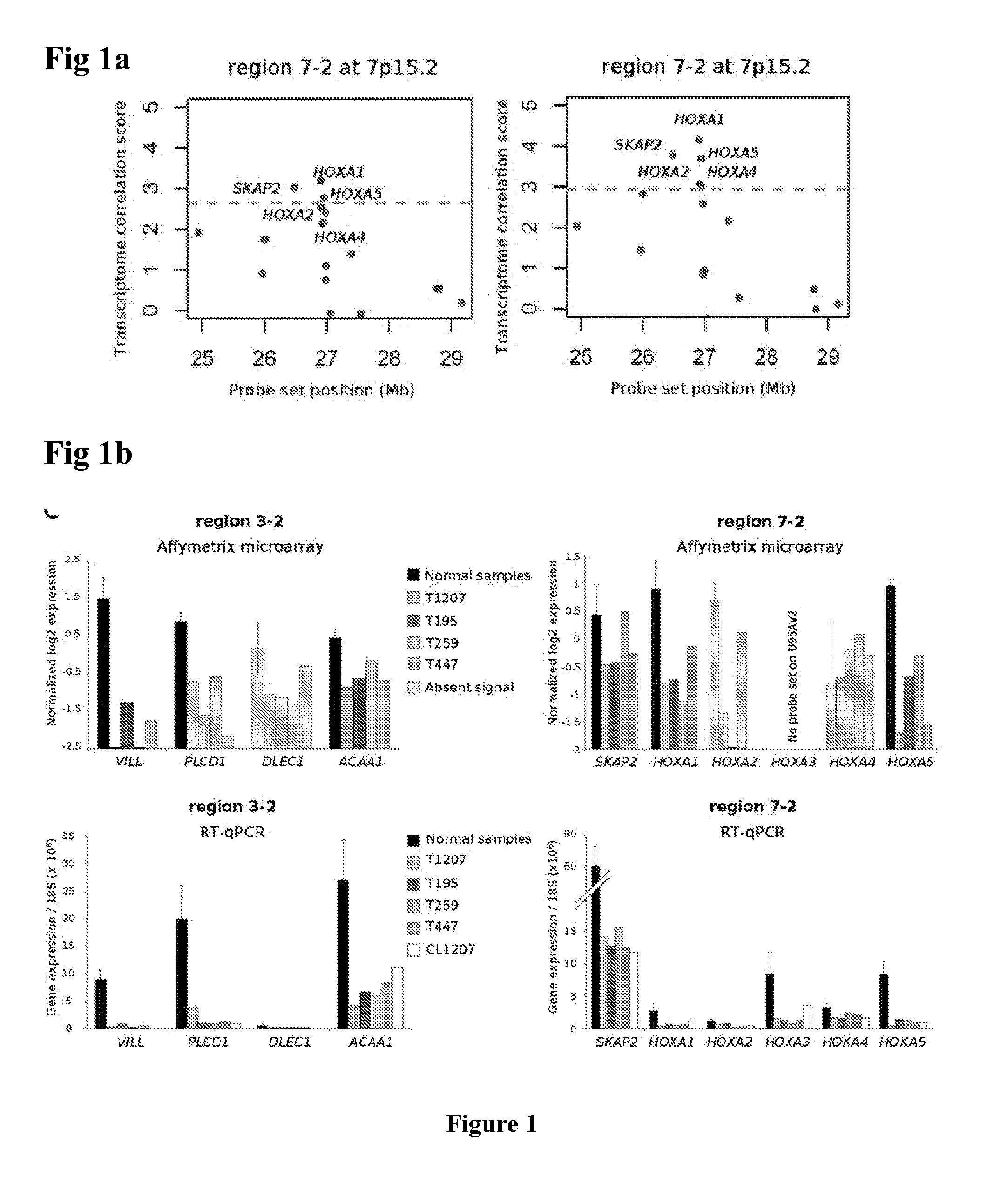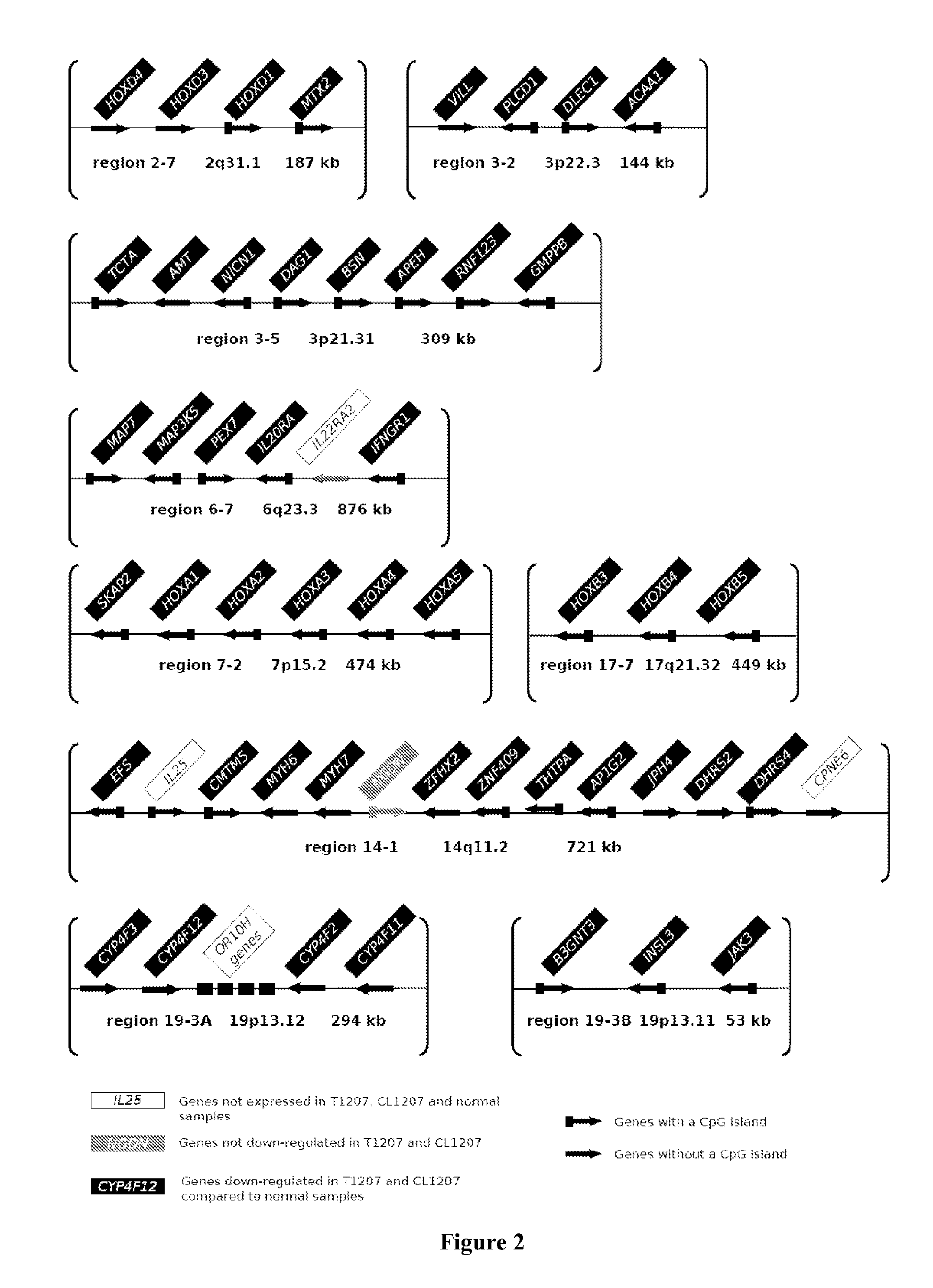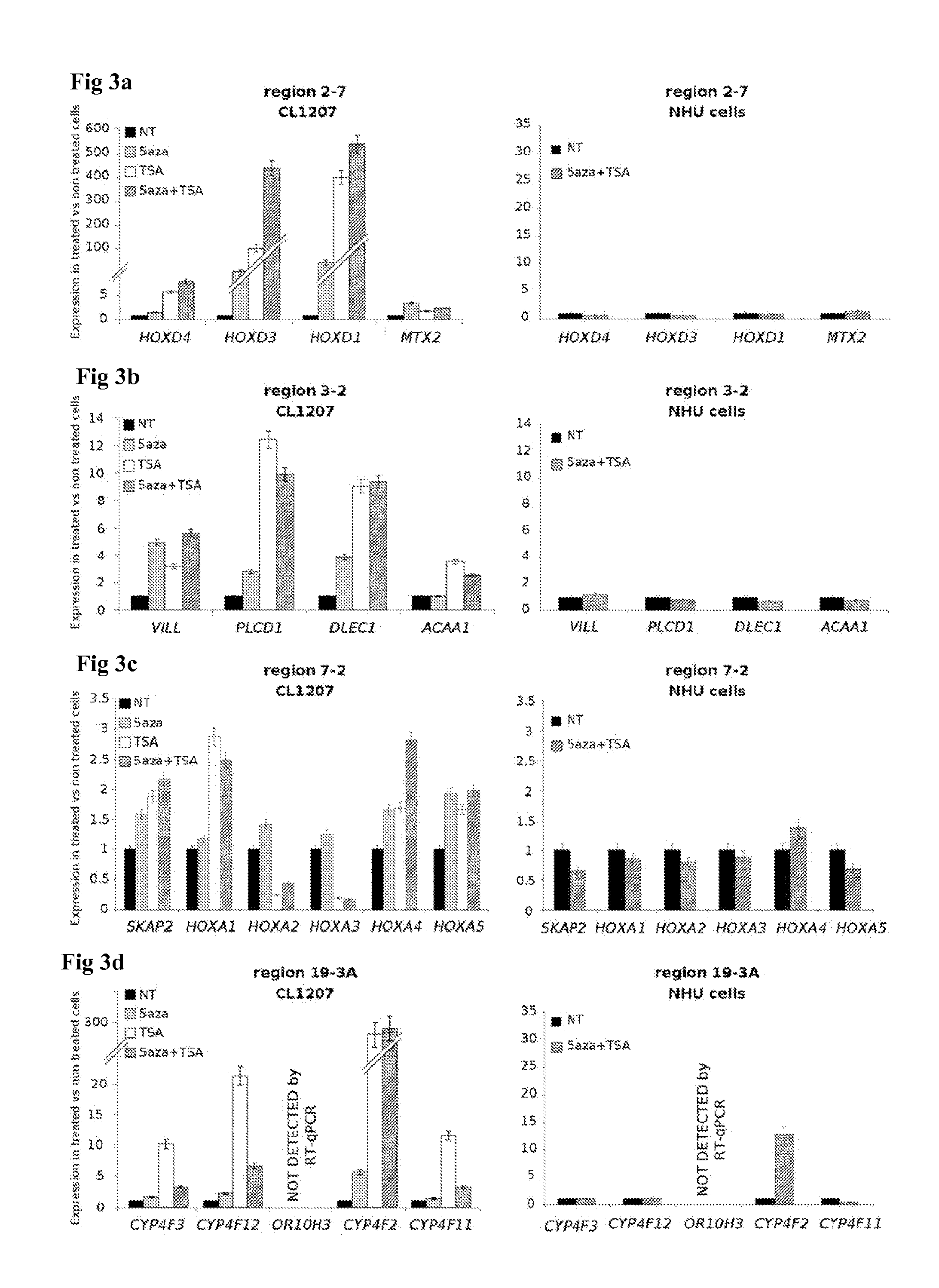Method for predicting the sensitivity of a tumor to an epigenetic treatment
a tumor and epigenetic technology, applied in the field of medicine, can solve the problems that muscle invasive bladder carcinoma remains a deadly disease for most patients, and achieve the effect of improving the survival rate of patients and improving the survival ra
- Summary
- Abstract
- Description
- Claims
- Application Information
AI Technical Summary
Benefits of technology
Problems solved by technology
Method used
Image
Examples
example 1
Materials and Methods
Patients and Tissue Samples
[0163]The analysis of the gene expression profiles and genomic alterations of 57 urothelial bladder carcinomas have been previously reporter (Stransky et al., 2006). These carcinomas were obtained from 53 patients included between 1988 and 2001 in the prospective database established in 1988 at the Department of Urology of Henri Mondor Hospital. The tumor samples came from 16 Ta, 9 T1, 6 T2, 13 T3 and 13 T4 tumors. The flash-frozen tumor samples were stored at −80° C. immediately after transurethral resection or cystectomy. All tumor samples contained more than 80% tumor cells, as assessed by H&E staining of histological sections adjacent to the samples used for transcriptome and genome analyses. Five normal urothelial samples, obtained as described in the article of Diez de Medina et al. (Diez de Medina et al., 1997) were also used for transcriptome analysis. An independent set of 40 human bladder tumors, containing 10 Ta, 6 T1, 6 T2,...
example 2
[0197]Affymetrix array expression was used to find markers for the RES phenotype. For all analyses, Affymetrix MASS signal values were Log 2-transformed and normalized by removing chip-specific and probe set-specific effects (the mean signal for all probe sets across one chip and the mean signal for one probe set across all chips, respectively). Statistical analysis and numerical calculations were carried out with Amadea® (Isoft, Gif-sur-Yvette, France). A SAM analysis (Tusher et al., PNAS 2001) was first performed between tumors with RES phenotype and invasive tumors without the RES phenotype. This analysis was restricted to the genes upregulated in the samples with RES phenotype with q-value<0.05. Genes with a fold-change above 2 was first selected. Then, the expression in the tumors with RES was compared with the normal urothelium samples and the muscle samples. Genes for which: 1) the signal was in average two times higher in the RES tumors compared to the normal samples, and 2)...
example 3
Materials and Methods
Patients and Tissue Samples
[0198]150 tumors were used to study gene expression. These carcinomas were obtained from patients included between 1988 and 2001 in the prospective database established in 1988 at the Department of Urology of Henri Mondor Hospital. Four normal urothelial samples, obtained as previously described were also used for transcriptome analysis. 40 of the 150 tumor samples and three normal samples were analyzed by RT-qPCR with TLDA format (Applied Biosystems, Courtaboeuf, France). All patients provided informed consent and the study was approved by the ethics committees of the different hospitals.
[0199]RNA and DNA were extracted from the samples by cesium chloride density centrifugation. RNA and DNA were extracted from cell lines with Qiagen extraction kits (Qiagen, Courtaboeuf, France).
Quantitative RT-PCR
[0200]1 μg of total RNA was used for reverse transcription, with random hexamers (20 pmol) and 200 U MMLV reverse tran...
PUM
| Property | Measurement | Unit |
|---|---|---|
| Current | aaaaa | aaaaa |
| Current | aaaaa | aaaaa |
| Current | aaaaa | aaaaa |
Abstract
Description
Claims
Application Information
 Login to View More
Login to View More - R&D
- Intellectual Property
- Life Sciences
- Materials
- Tech Scout
- Unparalleled Data Quality
- Higher Quality Content
- 60% Fewer Hallucinations
Browse by: Latest US Patents, China's latest patents, Technical Efficacy Thesaurus, Application Domain, Technology Topic, Popular Technical Reports.
© 2025 PatSnap. All rights reserved.Legal|Privacy policy|Modern Slavery Act Transparency Statement|Sitemap|About US| Contact US: help@patsnap.com



